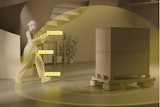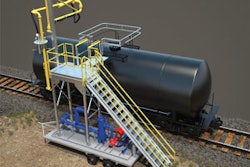The spark of insight that produces a successful product does not come from a group, but from an individual mind.
Much is written about the idealized new product development (NPD) process, but most of it focuses on groups, teams, organizational structure, and activities. Seldom does anyone talk about why it works.
At the root of what we do is how we think. The spark of insight that produces a successful product does not come from a group, but from an individual mind. No matter how rich the environment or how big, smart, or motivated the group, it is the single mind that connects the dots. Understanding how that mind is nurtured by the process can help make your NPD path easier.
Content vs. Process
At the beginning of the NPD process, whether you are an internal or external solution provider, you will typically know little about the technical problem presented by the customer. In my company, for instance, we pride ourselves on being broadly cognizant of most areas of engineering and science, and we have great depth of expertise in a few key areas. Unfortunately, we cannot be content experts in everything. If you are in a problem-solving or NPD group, answerable to an internal customer, you are in the same boat.
The customer, on the other hand, typically has content experts that are well versed on the potential applications of a technological opportunity, if not the specifics. Their insight is critical, because it provides a framework for defining and measuring success. They become resources for that initial brain dump that allows one to come up to speed on the problem at hand.
Immersion
Before we start picking the brains of application experts, we must undergo an in-depth immersion process. We gather data on everything vaguely related to the stated challenge. Once we’ve completely immersed ourselves in the problem, we can begin to ask the relevant questions of the customer.
Humble Naiveté
One of the greatest tools an NPD developer can cultivate is what I like to call “humble naiveté.” I am personally blessed with an abundance of this, although some might debate the humility. Because I am neither an engineer nor a “hard” scientist, I am allowed to ask dumb, naïve questions when reaching out to content experts. This reflects the notion that most people are willing to teach in their area of expertise if asked by a non-competitor. One of my company’s greatest strengths, according to one of our customers, is a worldwide network of content experts that we can call on for in-depth knowledge on virtually any subject. This powerful resource has been cultivated over many years by perfecting two skills: listening and asking non-threatening questions.
Casting a Wide Net
In addition to searching the world for information, we also gather data on the content area as seen through the eyes of other industries. When working on a pump for the down-hole oil business, for instance, we not only look for pump information inside the oil patch, but also from medical, environmental, and automotive industrial segments. Our curiosity can drive us outside of the technical world for inspiration. You’d be surprised what can be learned about down-hole oil pumping by researching how a giraffe’s circulatory system can keep its brain properly oxygenated, or how its blood pressure regulatory system can keep control when a giraffe suddenly drops its head to the ground.
Team Effort
While the individual provides the spark, building the fire for innovation is a team effort. In our case, everyone gets involved. From mechanical and electrical engineers, to physicists, microbiologists, and shop folk; when there is a problem to be solved, it is full immersion, all-minds-on-deck time. If you think about it, the whole field of biomimetics came from such interactions.
Toys & Props
If a picture is worth a thousand words, and a video worth a thousand pictures, physical props are worth a thousand videos, if used correctly. As we try to find solutions for a problem, we look for physical demonstrations of ancillary concepts. Years ago, a psychologist named George Miller found that people can only store a limited amount of information in their short-term memory. When trying to imagine a complex system, there are only so many image concepts we can hold in our minds. This becomes especially true when you try to imagine the dynamic movements for each of part of that system. Physical objects can act as place keepers that allow the short-term memory to focus on the most important information. The more diverse the props, the more likely one is to achieve an “out of the box” breakthrough.
Serendipity & Hard Work
It has been said, “The harder I work, the luckier I get.” Innovation comes from an individual mind that is best nurtured by a group, immersed in an information-rich environment, and focused on solving a problem. The singularity of discovery, or ah-ha moment, comes when one mind connects the dots, makes the leap, and sees what no one else sees. It can seem like a random, accidental flash, and we often call it serendipitous, luck, or brilliance. I wonder how much serendipity is like luck – the more we prepare, nurture, immerse, support, and stimulate it, the more serendipity we get. We call this process “enhanced serendipity,” and I am convinced that if you do this right it’s not really serendipitous at all, it becomes certainty.
At the end of the day, we know that every aspect of the NPD process, from marketing to manufacturing, requires certainty. Certainty is the inverse of risk, and our job in NPD engineering, is the reduction of risk.
Mike Rainone is the co-founder of PCDworks, a technology development firm specializing in breakthrough product innovation. Contact him at [email protected] and visit www.pcdworks.com.























